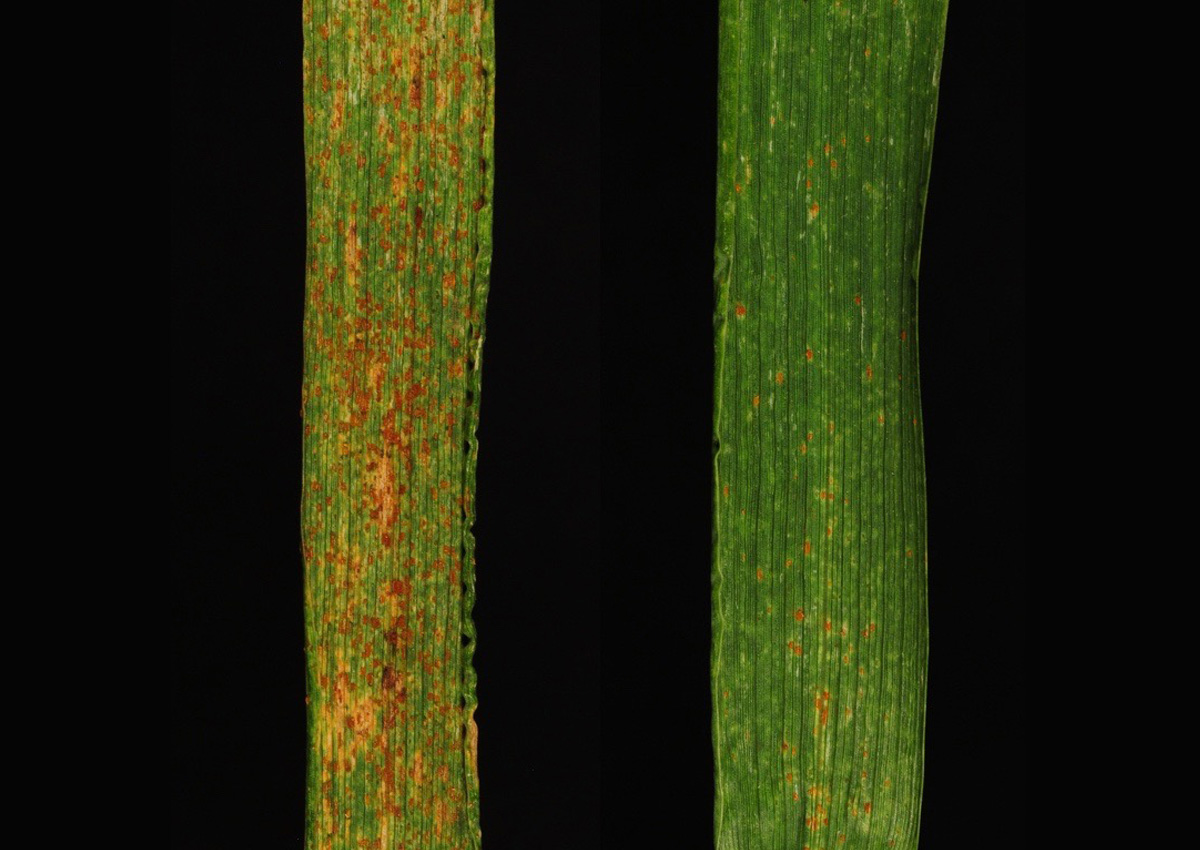
CSIRO "Gene Sandwich" to Boost Wheat Resistance to Rust
January 6, 2021| |
Researchers at Australia's Commonwealth Scientific and Industrial Research Organisation (CSIRO) have led an international effort to develop wheat plants with a stronger and potentially more durable level of resistance against rust diseases by "stacking" five resistance genes together.
"Our approach is like putting five locks on a door – you're making it very difficult to get in," said lead CSIRO researcher Dr. Mick Ayliffe. He added that this novel approach of building multiple layers of protection will make it much harder for rust pathogens to successfully attack wheat.
Dr. Ayliffe said their study targeted stem rust, but the same technology can be used to breed against stripe and leaf rust diseases as well, and in different existing wheat varieties to add resistance. "One of the genes we selected actually protects against stem, leaf and stripe rust diseases, so it's entirely possible to include genes that also work against other rust species," he said. Adoption of this new in-built resistance technology would also be a valuable tool for integrated pest management, reducing the need for fungicides and increasing the durability of the management tools for farmers.
For more details, read the article in CSIRO News.
| |
You might also like:
- 10 New Genes Identified for Resistance to Stripe Rust Disease
- Wheat Gene Confers Stem Rust Resistance to Barley
- Gene for Stem Rust Resistance in Wheat Solves Decades-Old Genomic Mystery
Biotech Updates is a weekly newsletter of ISAAA, a not-for-profit organization. It is distributed for free to over 22,000 subscribers worldwide to inform them about the key developments in biosciences, especially in biotechnology. Your support will help us in our mission to feed the world with knowledge. You can help by donating as little as $10.
-
See more articles:
-
News from Around the World
- ISAAA Presents 2019 Biotech Adoption Findings to Stakeholders in Europe and South America
- UBIC Builds NARO Anti-tick Vaccine Team's Capacity for Biosafety Compliance
- CIMMYT Announces Fall Armyworm Tolerant Maize Hybrids for Africa
- Researchers Find Flag Leaves Top Off Rice Photosynthetic Performance
- USDA APHIS Deregulates GE Corn with Enhanced Yield and Herbicide Tolerance Traits
- Price, Nutrition Among Top Factors that Affect Canadian Consumers' Choice to Buy GM Foods
- Scientists Boost Vegetable Oil Production in Plant Leaves
- CSIRO "Gene Sandwich" to Boost Wheat Resistance to Rust
-
Research Highlights
- Bt Cotton Key in Eradicating Destructive Pest from the US and Mexico
-
Plant
- Target-AID and CRISPR-Cas9 Improve Lycopene Content in Tomatoes
- What are TALENs?
-
Health
- Fast-spreading SARS-CoV-2 Variant in the U.K. Raises More Questions
-
Read the latest: - Biotech Updates (October 22, 2025)
- Gene Editing Supplement (September 24, 2025)
- Gene Drive Supplement (February 22, 2023)
-
Subscribe to BU: - Share
- Tweet

